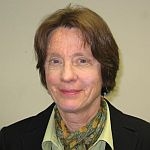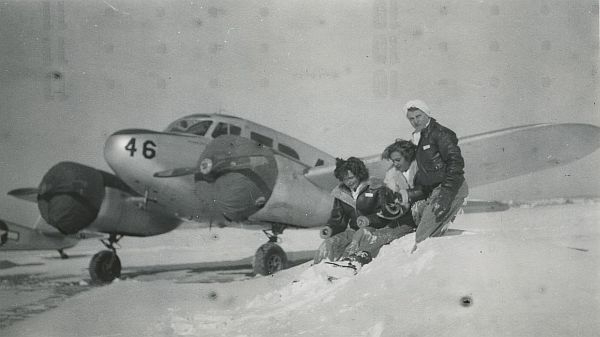 (HOST) In observation of Women’s History Month. VPR is featuring a series of stories about remarkable Vermont women. As part of this year’s focus on "Women and War," commentator and Vermont historian Cyndy Bittinger has the story of Patricia Kenworthy Nuckols of Manchester, who received a Congressional Gold Medal in 2009 for her work during World War II as a female pilot.
(HOST) In observation of Women’s History Month. VPR is featuring a series of stories about remarkable Vermont women. As part of this year’s focus on "Women and War," commentator and Vermont historian Cyndy Bittinger has the story of Patricia Kenworthy Nuckols of Manchester, who received a Congressional Gold Medal in 2009 for her work during World War II as a female pilot.
(BITTINGER) "She wanted to dare all that a man would dare!" the New York Times editorial declared about flying pioneer Amelia Earhart. I would choose those words to describe the first women pilots who dared to join the Army/Air Force during World War II. More than 1,000 came forward from 1942 to 1944 to ferry aircraft, test planes, instruct male pilots and tow targets to be shot at by practicing gunners. Vermont claims three brave souls who did this: Sylvia Burrill of Bennington, Monica Frasseto of Dummerston, and Patricia Kenworthy Nuckols of Manchester.
Recently, Pat Nuckols shared her reminiscences about the Women?s Army Service Pilots or WASPs. She told me she participated because this was her "opportunity to fly." As a girl, her two greatest ambitions were to own a pony and fly a plane. She got the pony, but had to stifle her ambition to fly until she was twenty years old and read about the women pilots. She then took flying lessons and qualified for a private pilot?s license, but she had one glaring problem. She was too short! The military specified women to be 5 feet, 2 inches tall. She was one half an inch too short. Even though she wore high heels and styled her hair in a bouffant, she could flunk the Army physical exam. She passed it but at her flight check, when the Army pilot noticed that she was too short, he just winked at her! She was admitted and carried 3 pillows onto the plane to fit in seats made for men! And she still had to stretch to reach the controls!

With about 5,000 planes a month coming off the factories? assembly lines during the war, women were needed to fly them to far flung locations. Pat called herself a "Rosie the Riveter of the Air Force" meaning that her work released men for combat duty. Of course the women were part of the Civil Service; they were treated as officers but had no rank or insurance. Thirty eight were killed in the line of duty.
Their battle for recognition was long and uphill. After the war, a few got piloting jobs, but none with a major airline. Of course a woman could be a stewardess if she had the right looks, height and weight! In 1976, the Air Force announced that they would accept women for the first time in our national history. The women pilots of World War II had been forgotten. They began a campaign for recognition and respect.
Last March, House Speaker Nancy Pelosi welcomed the WASPs to Washington with Manchester?s Patricia Kenworthy Nuckols in a group of about 200 female aviators, most now in their eighties and nineties. They received the Congressional Medal of Honor. What thrilled Pat the most was receiving her medal from 1st Lt. Tina Terry, an Osprey Pilot from the Marine Corps. And of course, Pat was envious.
See The Main Vermont Women Series Page
This story failed to note another Vermont resident who
served a a WASP during World War II. The fourth was Vivian Nemhauser.